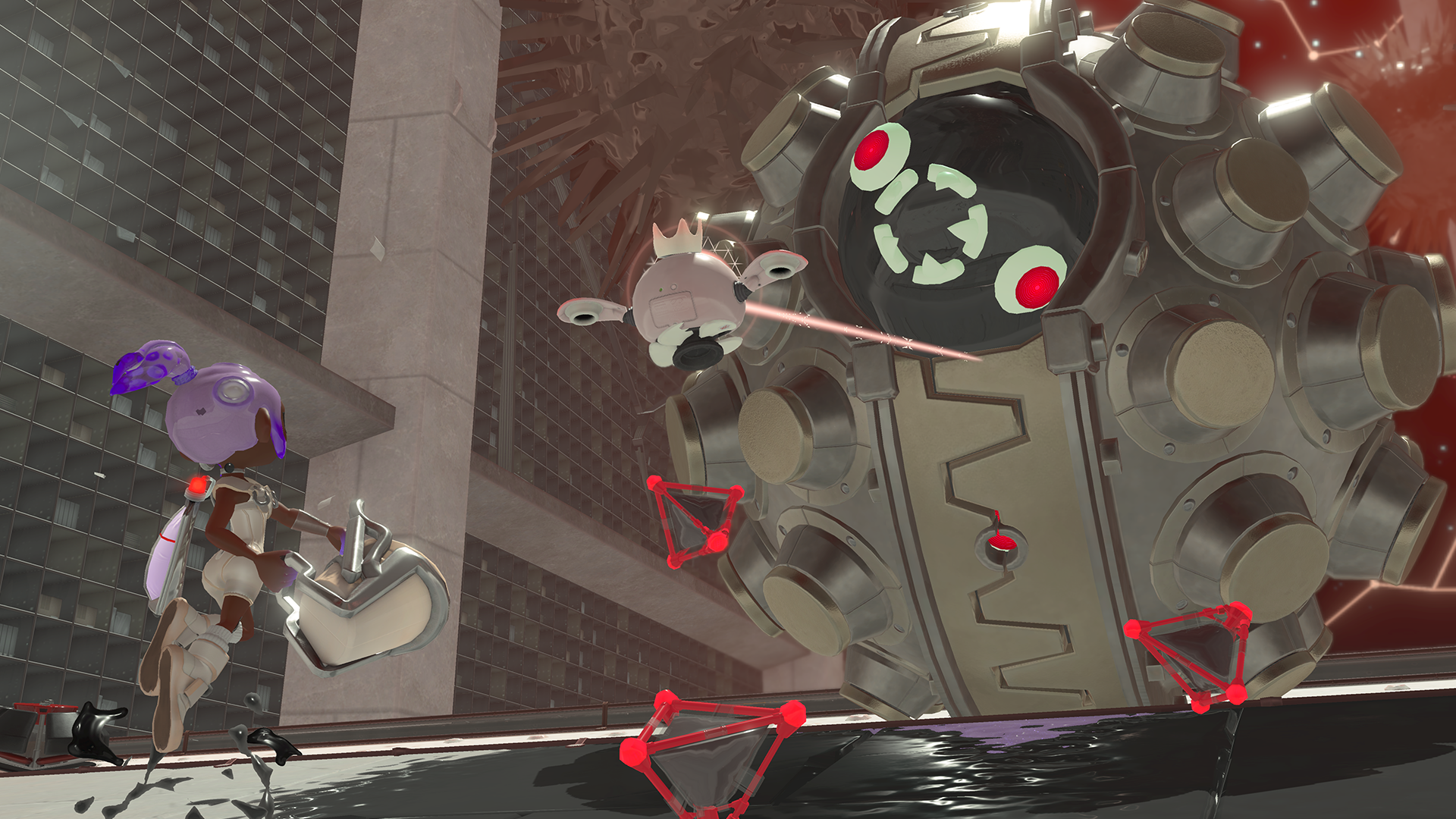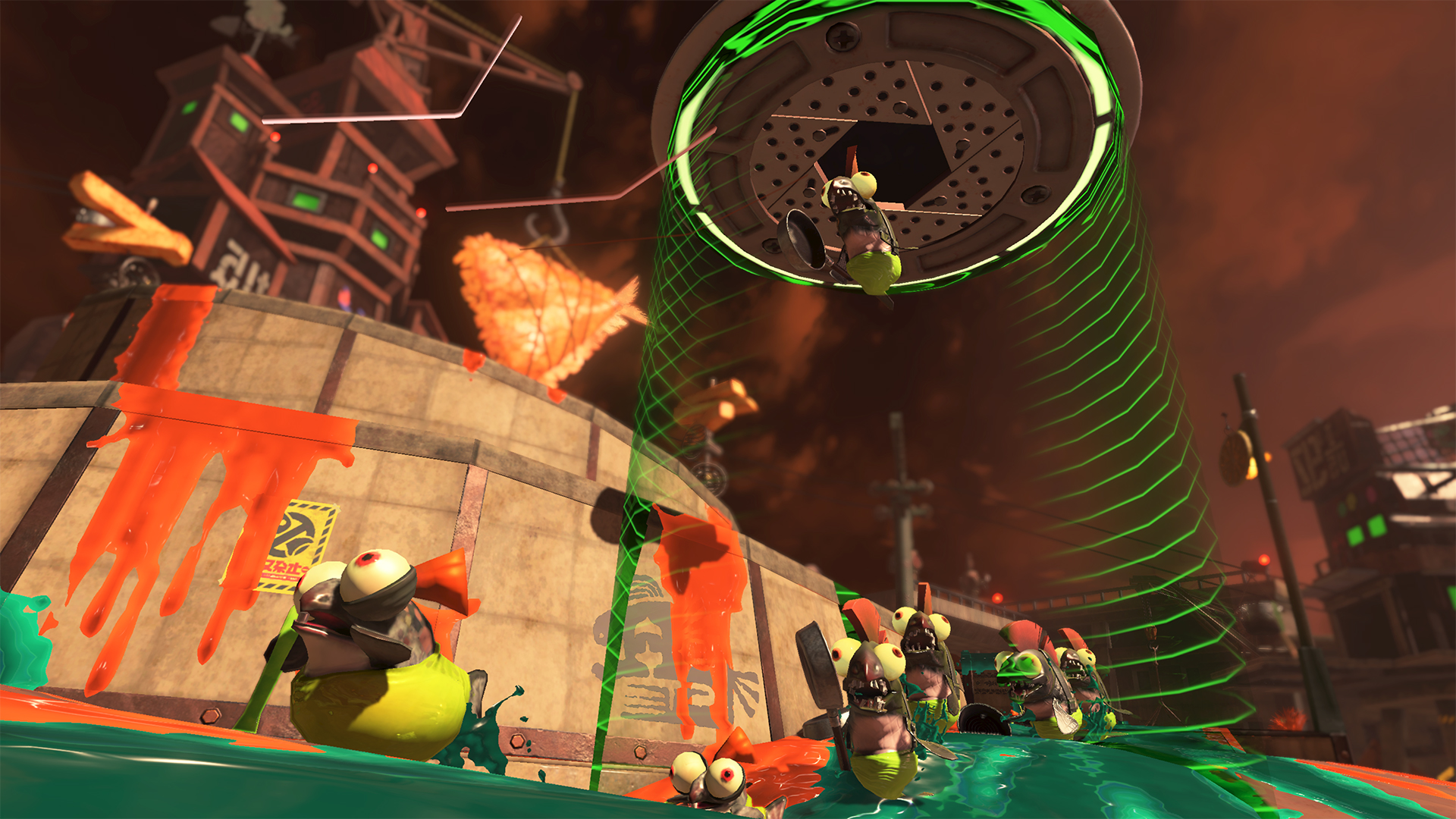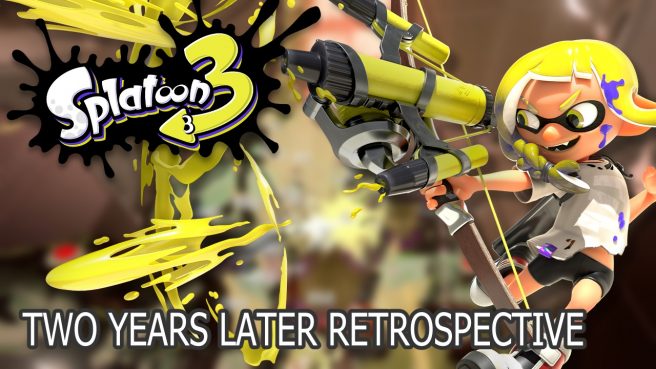At the time of writing, Splatoon 3’s Grand Festival is less than a month away. Though technically not quite confirmed to be the last Splatfest, it’s at least heavily implied to be. If that winds up being the case, then it’ll be the end of Splatoon 3’s two-year content cycle. There’s a lot to talk about with this game, and with its end potentially approaching, we figured it’d be a good time to take a look at everything Splatoon 3 has had to offer over the past few years – as well as some ways the series can improve with a potential Splatoon 4.
Single-player modes

If we were to hold a vote asking readers which Splatoon story campaign they liked best, Octo Expansion (if we count it, since it’s DLC) would almost certainly come in first. That said, Splatoon 3’s story campaign, Return of the Mammalians, would likely come in second place. Though it starts like any other Splatoon story mode, the player winds up going to Alterna, the final refuge of the human race before they canonically went extinct. It’s a very interesting premise, and in a way it’s sort of neat to see so many Nintendo franchises go the post-apocalyptic route (Kirby and Pikmin are implied to be heading that direction, too). The levels are structured in a similar way to Octo Expansion; pick one of three weapons and make your way through a challenge specifically designed for one of those weapons. The difficulty level is a bit lower compared to Octo Expansion, but some of the later challenges – especially the post-game level – do become quite difficult. Much like Octo Expansion, Return of the Mammalians has a great final boss and ending. We won’t include any spoilers here, but it’s over-the-top and builds on established lore. Overall, it’s a fun time and a great way to get used to Splatoon’s movement and weapon mechanics before you start playing online multiplayer against skilled players.
Splatoon 3’s single-player mode is definitely solid, but at the end of the day it’s sort of more of the same. Generally speaking, Splatoon’s single-player levels are very video game-y in the sense that they’re not really believable areas. Think of something like the final stretch of Octo Expansion or Return of the Mammalians – we’d like that for the whole campaign. Imagine exploring a big abandoned city full of enemies or even something simple like a forest with rivers and streams you have to avoid touching (since Inklings and Octolings dissolve in water). There’s real potential for a Splatoon story mode to incorporate more levels like those to enhance their story-telling. As it stands, most of Splatoon’s lore is divulged through Easter eggs or things you really have to go out of your way to look for. In total, we’ve had many Splatoon campaigns with isolated, blocky challenges inside dream-like areas. For the next game, it might be time for something new.
Then we have Side Order, Splatoon 3’s main DLC campaign. Unlike previous story modes, Side Order actually does try something new – it’s a roguelite, meaning you can climb the Spire of Order with a different starting weapon and then collect upgrades along the way. It’s a neat idea that hasn’t been explored in Splatoon before, and we wouldn’t be surprised if Splatoon 4’s main story mode is a more fleshed-out roguelite in a similar way as Side Order is. There’s a decent amount of replayability here; each upgrade has its own color, and you can try doing color-specific runs to earn more Prlz at the end (which you can redeem for prizes exclusive to Side Order). You can also use Marina’s hacks to make the Spire an easier climb; for example, you can increase your attack power or the number of lives you have. Where the mode starts to fall short, however, is in the variety of the floors. Salmon Run has more unique stages than Side Order has unique challenges. There are five challenges in total: Splat Zones, a modified version of Tower Control, destroying portals that spawn enemies, chasing down fast enemies, and shooting 8-Balls into the goals. There are plenty of stage designs, but the goal will always be one of those five. We think it’d have been nice to have more varied objectives; the levels tend to run together a bit, though there are boss battles to break up the repetition. That said, there are only three bosses that can appear on the Spire of Order, so if you do multiple runs you’ll always fight two of the three same bosses during your climb.
Overall, it’s hard to say whether Splatoon 3’s single-player content is a step above Splatoon 2’s. Let’s be clear here, though – Splatoon 3’s story mode absolutely clears Splatoon 2’s standard base game campaign. It’s Octo Expansion that’s hard to beat, but we think Splatoon 3’s standard campaign at least comes close. Side Order does leave a little bit to be desired, but it’s a step in the right direction because it tries something new. We’re definitely looking forward to what Splatoon 4 has to offer. Maybe it’ll continue to go the roguelite route, or maybe it’ll try something entirely new. Who knows!
Competitive modes

For the most part, Splatoon 3 maintains the status quo regarding its competitive modes. Turf War is accessible and easy to understand as ever – ink more turf than the opposing team, and that’s just about all there is to it! Once you’ve played a good amount of Turf War, you’ll level up and gain access to the ranked modes: Rainmaker, Splat Zones, Clam Blitz, and Tower Control. For the most part, these ranked modes are fairly unchanged from their Splatoon 2 appearances. Clam Blitz in particular has seen a decent amount of reworks to make it easier to play, but the rest of the modes are as good as they’ve ever been. Where Splatoon 3 really shines, however, are its Splatfests. We haven’t even seen much of the Grand Festival – which will no doubt be the greatest Splatfest in this game – but what we’ve seen so far has been incredibly solid. The addition of Fizzbangs, while minor, helps set Splatfests just a little bit apart from standard Turf War matches. The seasonal events like FrostyFest and Summer Nights also have unique ink, music, and more to set those apart from other Splatfests. And given the fact that you can explore three different hub world cities, Splatfests feel more like parties in Splatoon 3 than they ever have before.
With all of that said, competitive modes aren’t exactly perfect in Splatoon 3. In particular, the map designs have taken a hit. Whereas previous Splatoon games include stages with several different routes to take, Splatoon 3 forgoes this approach in favor of more open fighting areas. In previous titles, some stages let you kind of do your own thing if you took a different route than the opponent. In this game, most stages want you to approach the center, fight opponents, eventually get splatted, and respawn. If you’re a casual player who doesn’t play Splatoon much, you might find yourself getting splatted over and over again by Splatlings and especially Chargers – as many maps, especially Brinewater Springs and the like, favor long-rangers. Another issue for more casual players is spawn camping; many stages allow the opposing team to enter your base and splat you as soon as you respawn. Though there are certainly ways around this – Squid Beakons, Tacticooler specials, and such – it remains a deterrent for casual players. In the next game, we’d like to see maps that place a lesser emphasis on long-ranged weapons and include additional routes to center-stage, plus more obstacles to hide behind as cover. Some of the later stages, like Robo ROM-en, avoid these problems. Others, like Marlin Airport and Lemuria Hub, still suffer from spawn camping and favor towards long-rangers. Generally, stages in Splatoon 3 are hit or miss, and we’re hoping there are more hits than misses in Splatoon 4.
It’s important to note, though, that Nintendo has taken criticism of Splatoon 3’s stages to heart – it hasn’t been completely ignored. Several stages, including Undertow Spillway, Barnacle & Dime, and Hammerhead Bridge have been reworked via game updates. Barnacle & Dime in particular was a huge improvement. Since we’re presumably at the end of Splatoon 3’s content cycle, it’s unlikely that we’ll see many more stage reworks, if any. They may not have completely fixed those stages, but they got close. Splatoon’s developers absolutely care about what the players think about their maps, but probably didn’t have a ton of time to fix them other than the reworks. It’s likely we see a different approach to stages in Splatoon 4.
Overall, Splatoon 3’s competitive modes are solid. There are some problems with stage designs, and at this stage in the game it might be difficult for casual players to get invested – online players are really good at this point – but with enough practice, Splatoon’s ranked modes are fun. Especially on voice calls with teammates, if you can set that up! There are certainly more improvements to make here and there, like how specials feel a bit too strong in Tower Control and how Reefslider, Splashdown, and Super Chump can easily get back the advantage in Splat Zones, but these are minor factors that don’t significantly detract from enjoyment of the game. The servers are still incredibly active even now, and we don’t expect that to change anytime soon.
Salmon Run

Of all the game modes present in Splatoon 3, it’s perhaps Salmon Run that has received the most additional changes and content. Generally speaking, there’s something of a renewed focus on Salmon Run’s cooperative play in this game, and we’re absolutely here for it. As we mentioned earlier, competitive ranked modes can feel a little bit oppressive or intimidating at times, so taking a break with cooperative play is a great way to prevent yourself from burning out on the game (or the second best way, with the first being to take a break). Compared to Splatoon 2, Splatoon 3’s Salmon Run mode has more stages, more wave events, more boss Salmonids, and the addition of new King Salmonid bosses that drop a fish scale currency. There’s a new King Salmonid meter that builds up as you play Salmon Run, and when it’s full enough, one of three Kings will drop in at the end of Wave 3. This gives playing Salmon Run over and over more of a purpose; some of its exclusive shop items are ludicrously expensive, and saving up scales provides a sense of satisfaction for playing the game.
Then there’s the new Big Run events, which we really hope aren’t over! Normally, Salmon Run operates on smaller-scale stages designed specifically for the mode. During Big Run, the Salmonids canonically take over a standard Splatoon multiplayer stage, hence the name Big Run – the stage is much larger than usual. King Salmonid scale drop rates are usually doubled or tripled, which provides even more of an incentive to play these events. This isn’t even mentioning Grizzco weapons, which are essentially super-weapons with upgraded abilities compared to the normal weapons you use during Salmon Run shifts. Many of them are crazy overpowered, which in turn makes you feel incredibly powerful. Salmon Run rotations with Grizzco weapons are always fun – there’s nothing quite like using your overpowered weapon to slice through hoards of Salmonids all on your own.
There are a few Salmon Run stages missing from Splatoon 2, including Ruins of Arc Polaris – which is a baffling exclusion, given it is directly connected to the lore present in Splatoon 3’s story mode. It feels strange to leave out a couple of Salmon Run stages from Splatoon 2, since in many ways each new Splatoon game is intended to replace the previous one. And since there are only about two missing stages, it’s a little disappointing that Bonerattle Arena was stated to be the final Salmon Run stage added to the game. We wouldn’t be surprised if Splatoon 4 ramps up cooperative play to the next level; in particular, it’d be fantastic to be able to play Big Run stages any time we wanted.
Overall, Splatoon 3 might not have provided exactly the amount of new content that fans wanted, but it’s still a good competitive game with active servers and a dedicated player base. Side Order did wind up not exactly sticking the landing thanks to its weaker storyline and relative lack of unique content, but it is still a solid outing. We’re very much looking forward to seeing where the Splatoon series goes from here on Switch 2 (or whatever Nintendo’s next console is called).
What do you think of Splatoon 3 on the whole? Better than Splatoon 2, or did it leave something to be desired? Let us know what you think in the comments down below.
Even with Splatoon 3’s content winding down, it’s not too late to get into the game! It’s available now on Switch, and you can access the official site here.
